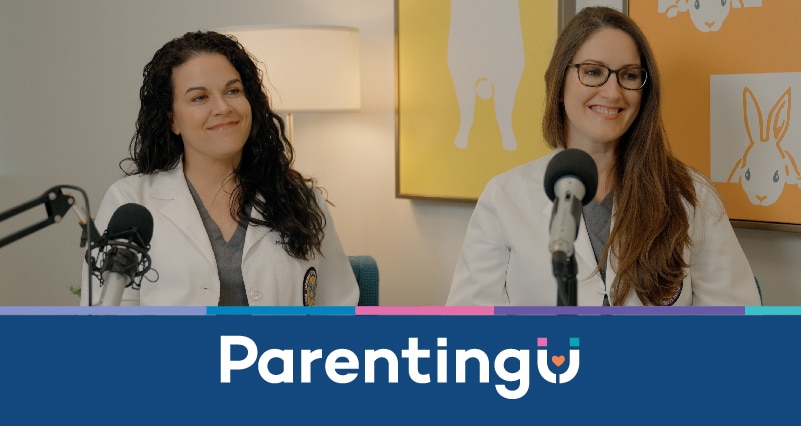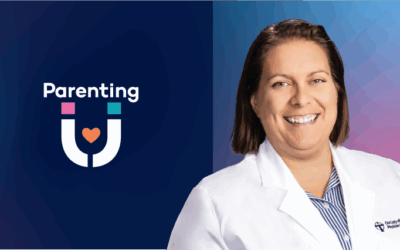Ota – otalaryng – otalaryng-what?
When Lisa Morris, MD, and Laura Hetzler, MD, FACS, were guests on a recent ParentingU podcast episode, they helped us learn to say and know the meaning of a lot of important terms parents may hear and use when it comes to otolaryngology, or ear, nose & throat care.
Dr. Morris and Dr. Hetzler are co-directors of Our Lady of the Lake Children’s Health Cleft and Craniofacial Multidisciplinary Team.
ENT Glossary
Otolaryngology, which has been shortened from otorhinolaryngology – oto meaning ear, rhino meaning nose, laryngology meaning throat. Otolaryngology means care for ear, nose & throat.
Rhinoplasty is surgery of the nose.
Alveolus is your gumline where your teeth are.
Palate is the roof of your mouth, with two parts – soft, which is muscle, and hard, which is bone.
Uvula is at the back of the soft palate – the “hangy down thing” that’s important for sound and resonance in your voice.
Resonance is the different inflections a voice makes, especially important for opera singers, and ENT surgeons would avoid operating on their uvulas or soft palates because it would change their singing voice.
Orthognathic surgery is jaw surgery – both the upper jaw, the maxilla, and the lower jaw, which is called the mandible.
Palatoplasty is repairing a cleft palate, putting the palate back together. There are a couple different ways to do that.
Pharyngoplasty is recreating the back of the throat, the part behind the palate – sometimes when the palate is too short a surgeon can bulk up the back of the throat so the palate can reach it better. Or can connect the back of the throat to the palate to improve speech.
Intravelar Veloplasty is taking the velar muscles (the palate muscles) and sew them together so they can work like a hammock to lift and lower the throat.
Gingivoperiosteoplasty – GPP – is done during a cleft lip repair on infants – if gumline cleft is close by and not separated too far, we’ll close the gingiva, the gum tissue, making a little tunnel to allow bone to grow across to make later repairs easier.
Myringotomy tubes are commonly known as ear tubes. Children who don’t have cleft palate may need them, but children with cleft palates are more prone to having fluid in their ears and needing tubes. Muscles in the back of the soft palate open the Eustachian tube, which connects the middle ear and the nasal-sinus cavity. When the Eustachian tube can’t open normally, an ENT will put in these tubes, creating a hole in the ear drum to equalize pressure until the palate can be repaired, or for a child without a cleft palate until their Eustachian tube is able to work well on its own.




